Recent Blog Posts
Is it Normal to Be Afraid to Drive After a Car Accident?
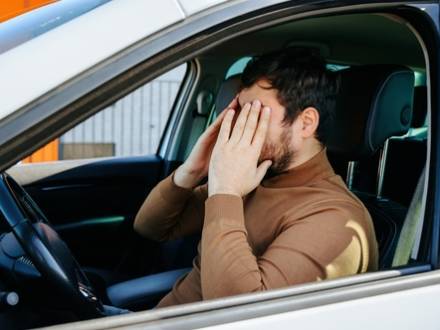 After a serious car crash, it is totally normal to feel scared about driving again. Even if your physical injuries heal completely, the emotional trauma of an accident can last for months or years. Many people have anxiety, flashbacks, or panic attacks when they get back behind the wheel or even think about driving.
After a serious car crash, it is totally normal to feel scared about driving again. Even if your physical injuries heal completely, the emotional trauma of an accident can last for months or years. Many people have anxiety, flashbacks, or panic attacks when they get back behind the wheel or even think about driving.
If you were injured in a crash caused by someone else, you may be entitled to compensation for both your physical and emotional suffering. Under Texas law, accident victims can recover not only economic damages, such as medical bills and lost wages, but also noneconomic damages for pain, suffering, and mental distress. A McKinney personal injury lawyer can help you understand your rights and guide you through the claims process.
Why Fear After a Car Accident Is Common
When a car accident happens, your body releases adrenaline and stress hormones to protect you in the moment. Those same reactions can make the accident easy to remember, causing your mind to replay the event long after the crash is over. Many people develop post-traumatic stress symptoms. For some people, this looks like avoiding certain roads. Others never feel comfortable letting someone else drive again. Still others have repeated nightmares about the accident.
Can You Still Sue in Texas if You Weren’t Wearing Your Motorcycle Helmet?
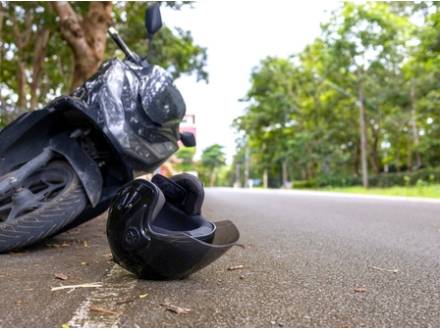 Motorcyclists know that riding without a helmet is not ideal, but it happens. But if you are injured in a motorcycle crash and were not wearing a helmet, you may worry that you have lost your right to compensation. Fortunately, in Texas, the law does not automatically prevent you from suing for your injuries.
Motorcyclists know that riding without a helmet is not ideal, but it happens. But if you are injured in a motorcycle crash and were not wearing a helmet, you may worry that you have lost your right to compensation. Fortunately, in Texas, the law does not automatically prevent you from suing for your injuries.
As of October 2025, Texas follows a modified comparative negligence rule under Texas Civil Practice and Remedies Code § 33.001. That means even if you were not wearing a helmet, you can still recover damages as long as you were less than 51 percent at fault for the accident.
But how much fault do you have, and how do you know? For answers to these questions and help throughout your case, talk to a Collin County, TX motorcycle injury lawyer. We can argue that you share little or no fault and fight for the most aggressive compensation.
Can I Sue a Texas Bar if a Drunk Driver Caused My Accident?
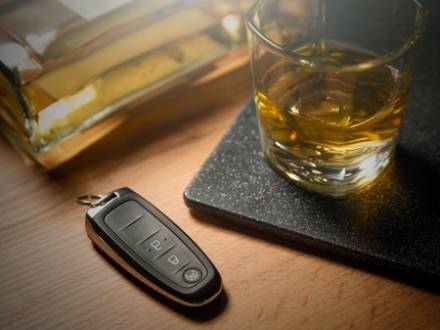 Drunk driving accidents can cause terrible injuries and lasting harm. However, these crashes are not always the fault of the driver alone. Under Texas law, bars, restaurants, and other businesses that allow people to get too drunk may also be held responsible. This type of claim falls under what is known as the Texas Dram Shop Law.
Drunk driving accidents can cause terrible injuries and lasting harm. However, these crashes are not always the fault of the driver alone. Under Texas law, bars, restaurants, and other businesses that allow people to get too drunk may also be held responsible. This type of claim falls under what is known as the Texas Dram Shop Law.
As of September 2025, this law still allows injury victims to pursue claims against a bar if it was clear the customer was obviously intoxicated and they were still served more alcohol. If that customer then caused a crash, the business may share liability for the injuries, medical costs, and property damage. A Plano, TX personal injury lawyer can review your case and explain your options for pursuing compensation.
What Should I Do if an Insurance Company Makes a Low Settlement Offer?
 After a car or truck accident, one of the most frustrating experiences can be opening a letter or getting a phone call from an insurance company, only to discover that their "offer" will not even cover your expenses. Medical bills, lost wages, and property damage can add up quickly, yet insurers often come back with numbers that do not come close to meeting what you need.
After a car or truck accident, one of the most frustrating experiences can be opening a letter or getting a phone call from an insurance company, only to discover that their "offer" will not even cover your expenses. Medical bills, lost wages, and property damage can add up quickly, yet insurers often come back with numbers that do not come close to meeting what you need.
If this has happened to you, you are not alone. Insurance companies have one goal: paying out as little as possible. The good news is that you are not required to accept their first offer. In fact, most initial settlement offers are deliberately low. Understanding why insurers do this and how you can respond is the first step to protecting yourself, and our McKinney, TX personal injury attorneys can help.
Why Do Insurance Companies Make Lowball Offers?
Insurance companies are businesses, and like any business, they want to protect their bottom line. Offering a quick, low settlement saves them money. They know that accident victims are often stressed, overwhelmed, and worried about paying bills. By dangling a check early, they hope you will accept less than what your claim is actually worth.
What If I Was Hit by an Uninsured Driver in Texas?
 Texas drivers are required by law to carry liability insurance, but that does not mean everyone follows the law. When someone is injured in a car crash caused by a driver who does not have insurance or whose policy is too small to cover the losses, this adds stress to an already challenging situation. Uninsured and underinsured drivers are a serious concern on Texas roads.
Texas drivers are required by law to carry liability insurance, but that does not mean everyone follows the law. When someone is injured in a car crash caused by a driver who does not have insurance or whose policy is too small to cover the losses, this adds stress to an already challenging situation. Uninsured and underinsured drivers are a serious concern on Texas roads.
Fortunately, you may still be able to recover compensation. If you were injured by an uninsured or underinsured driver, speak with a qualified Collin County, TX personal injury lawyer to understand your options for moving forward.
What Does Texas Law Say About Drivers’ Insurance?
Texas law requires all drivers to carry minimum liability insurance coverage of:
Is Distracted Driving Still a Problem in Texas?
 Despite laws against texting and public awareness campaigns, distracted driving continues to injure and kill people across Texas. Distracted driving was a contributing factor in over 91,000 wrecks in the state in 2024, causing more than 370 fatalities. In fact, distracted driving was the second-highest contributing factor in 2024 accidents.
Despite laws against texting and public awareness campaigns, distracted driving continues to injure and kill people across Texas. Distracted driving was a contributing factor in over 91,000 wrecks in the state in 2024, causing more than 370 fatalities. In fact, distracted driving was the second-highest contributing factor in 2024 accidents.
Although Texas distracted driving laws focus on hands-on cell phone use, drivers engage in other forms of distraction that can be just as dangerous. A distraction does not have to be illegal to be negligent. Another driver’s negligence can give you the grounds you need to seek compensation if a distracted driving accident injured you. Our Plano, TX personal injury attorney can investigate your crash and help you in your pursuit of maximum compensation.
How Much Compensation Can I Get After a Pedestrian Accident?
 In 2023, 5,921 pedestrian accidents in Texas caused 807 deaths, 1,457 suspected serious injuries, and 2,412 suspected minor injuries. An additional 1,233 pedestrians may have been wounded in these collisions. Nationwide, over 68,000 pedestrians were injured and 7,314 were killed in 2023.
In 2023, 5,921 pedestrian accidents in Texas caused 807 deaths, 1,457 suspected serious injuries, and 2,412 suspected minor injuries. An additional 1,233 pedestrians may have been wounded in these collisions. Nationwide, over 68,000 pedestrians were injured and 7,314 were killed in 2023.
Pedestrian accidents affect thousands of families every year. After medical care has been seen to, some of the first questions that victims have are whether they can pursue a compensation claim and how much their settlement could be. Our experienced McKinney, TX personal injury lawyer will fight to maximize your damages.
How Is Compensation Calculated for Pedestrian Accidents?
Some people believe there is an average settlement amount for personal injury cases, but that is not true. Each accident has unique factors, and it is those that determine how much compensation you could receive. Working with an experienced attorney is vital if you hope to collect as much as you deserve.
How Many Motorcyclists Die in Texas Wrecks Every Day?
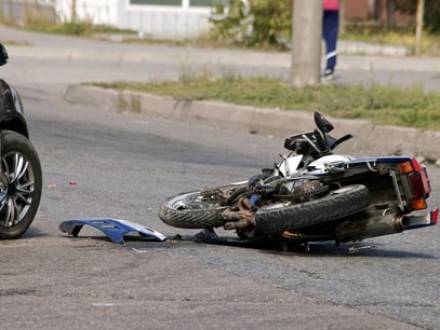 On an average day, 1.3 motorcyclists die in Texas wrecks. In 2023, 599 people were killed. Helmets cannot prevent fatalities. However, they may lower the number of deaths and reduce the severity of head injuries. The National Highway Traffic Safety Administration estimates that the chance of wreck fatalities is 37 percent less for motorcycle riders and passengers who wear helmets. A related study revealed that bikers are three times more likely to sustain brain injuries when unhelmeted.
On an average day, 1.3 motorcyclists die in Texas wrecks. In 2023, 599 people were killed. Helmets cannot prevent fatalities. However, they may lower the number of deaths and reduce the severity of head injuries. The National Highway Traffic Safety Administration estimates that the chance of wreck fatalities is 37 percent less for motorcycle riders and passengers who wear helmets. A related study revealed that bikers are three times more likely to sustain brain injuries when unhelmeted.
The Texas Department of Transportation reminds drivers to "Share the Road: Look Twice for Motorcycles." Understanding why these wrecks happen can help prevent them. If you are injured in a motorcycle accident or your loved one was a fatal victim, our dedicated Collin County, TX personal injury lawyer can help you secure the compensation you deserve.
Can I Get a Settlement for Catastrophic Injuries?
 If you sustain injuries in an accident, they could be minor, allowing you to heal fully over time. However, some injuries are extremely serious, leaving you with permanent conditions that may never completely heal. Catastrophic injuries can alter your life physically, emotionally, and financially. If someone else’s intentional act or negligence caused your catastrophic injuries, you could be eligible for compensation.
If you sustain injuries in an accident, they could be minor, allowing you to heal fully over time. However, some injuries are extremely serious, leaving you with permanent conditions that may never completely heal. Catastrophic injuries can alter your life physically, emotionally, and financially. If someone else’s intentional act or negligence caused your catastrophic injuries, you could be eligible for compensation.
Your damages could be quite high. Sadly, the more your case is worth, the harder the liable insurance company will probably fight against paying your claim. Your skilled McKinney, TX catastrophic injuries lawyer will fight to see you collect as much compensation as you deserve.
What Kinds of Injuries Are Considered Catastrophic?
Whether your catastrophic injuries resulted from a motorcycle, pedestrian, car, or truck accident, your life could be forever changed. Catastrophic injuries include:
Who Pays Me for My Texas Truck Accident Injuries?
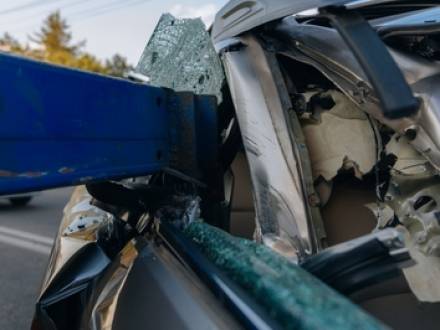 Texas plays a significant role in the U.S. supply chain, with our shipping ports and freight routes handling a significant percentage of the nation’s goods. While Americans rely on tractor-trailers to transport goods, large trucks are capable of causing catastrophic injuries and property damage when they cause crashes. Preliminary 2023 data from the Federal Motor Carrier Safety Administration reports 19,531 truck crashes in Texas, responsible for 11,386 injuries and 764 fatalities.
Texas plays a significant role in the U.S. supply chain, with our shipping ports and freight routes handling a significant percentage of the nation’s goods. While Americans rely on tractor-trailers to transport goods, large trucks are capable of causing catastrophic injuries and property damage when they cause crashes. Preliminary 2023 data from the Federal Motor Carrier Safety Administration reports 19,531 truck crashes in Texas, responsible for 11,386 injuries and 764 fatalities.
If a truck crash injures you, who is liable for paying compensation? How do you know if you qualify to file a claim? The skilled lawyers at Burress Injury Law must investigate your accident to answer those questions. Call us today for your free consultation to learn more.









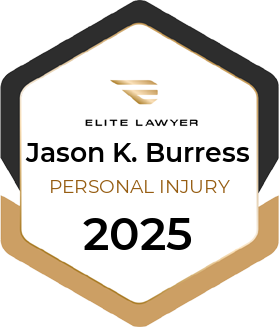




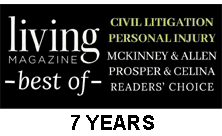





 ON
ON
